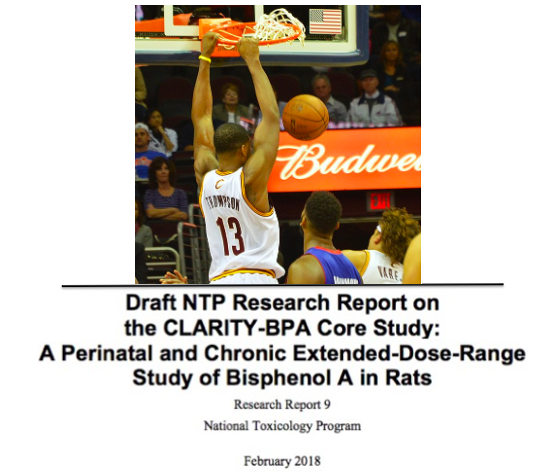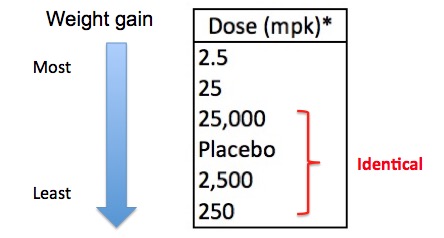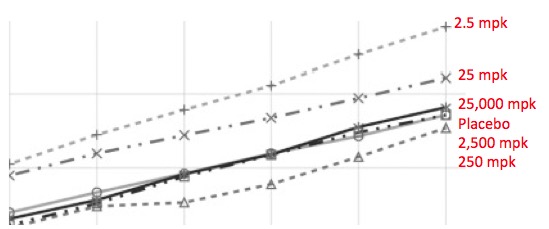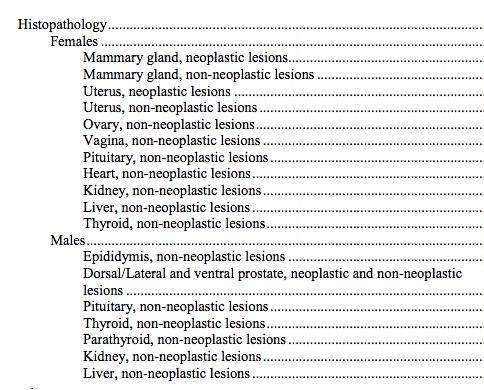There are no guarantees in life. Except when there are. Here's one. It was a pretty good bet that when the FDA issued the CLARITY-BPA Core study, the most comprehensive study ever of BPA, (1) which showed that the chemical is harmless, that there would be a few sore losers who would unhappy about the results, no matter how convincing. But to those of us who actually believe in science, the CLARITY-BPA Core study was a slam dunk (2), one of two notable slam dunks in one week.

Top - Tristan Thompson Dunks (Wikimedia Commons) Bottom - Cover Page of the CLARITY Study. Photo: Deadspin.com.
So, is it possible that BPA really is harmful, or at the very least, needs to be studied more? Are the critics' objections valid, or is something else going on?
Let's look at what some of the more outspoken academics who objected to the findings of CLARITY have to say. Do the media quotes match the actual science, pharmacology, and toxicology behind them? Laura N. Vandenberg (University of Massachusetts), a spokesperson for the Endocrine Society, makes a number of claims. How well do these claims hold up when you dig deeper than the headlines? Not very well.
"The report does a "poor job of discussing the limitations of this guideline study...The question is really whether the Noael [no observed adverse effect level] should be changed... The data do not support the conclusion that "BPA is safe."
Laura N. Vandenberg
Vandenberg's raises a number of objections to the FDA report. Here are a few.
1. BPA causes rats to gain weight
- The "weight gain" is that Dr. Vandenberg discusses isn't real; it's an artifact, which becomes obvious if you dig through the 249-page report (2). There is no dose-relationship; the relationship between dose and weight gain is scattered and nonsensical - clearly a result of experimental noise rather than anything real (Figure 1).

Figure 1. The effect of different doses of BPA on the weight of female rats. Source: CLARITY-BPA, Figure 8 (page 87). There is no effect, only experimental noise. *MPK = milligrams of drug per kilogram weight of the rat.
- Figure 1 shows results from the FDA report (Figure 8, page 87). In particular, the rats that gained the most weight got the lowest dose of BPA (2.5 mpk), while the rats that gained the second most weight gain got the second lowest dose, 25 mpk - precisely the opposite of what would be expected in a dose-response relationship. The absence of dose-response raises red flags. It should.
- The relationships between other doses and body weight gain are far worse. Even assuming that whatever was seen at low doses makes any sense, things go south fast when the effect of other three doses plus placebo are examined. The curves of rats given doses of 25,000 mpk, placebo, 2,500 mpk and, and 250 mpk are superimposable; they showed no gain or loss in weight regardless of the BPA dose. Good luck explaining this (Figure 2).

Figure 2. The relationship, such as it is, of different doses of BPA and rat weight, weeks 32-52. This makes no sense whatsoever.
2. BPA causes mammary gland tumors in rats
As bad as the weight gain claims are, the cancer claims are even worse.
"They found certain BPA doses are linked to a high rate of mammary gland tumors, which is concerning."
What is really concerning is that Vandenberg could even say this with a straight face. It is ridiculous. This so-called "increase" was observed only in one of the ten groups of female rats, and only in those that got the lowest dose of BPA, and in a breed of rat that is known for the spontaneous generation of tumors, even without test chemicals. It is perfectly clear that this so-called increase in tumors is an artifact, not a real effect. Cancer claims based on CLARITY are screaming nonsense. Surely Vandenberg must know this.
3. There have been insufficient studies
"The endpoints here do not encompass the full effects of endocrine-disrupting chemicals, especially because the whole point of the study was to compare the NCTR's ( National Center for Toxicological Research ) endpoints with more sensitive effects evaluated by endocrinologists."
Since nothing can be proven safe, the list of possible concerns about a given chemical is endless. If Vandenberg is claiming that not enough studies have been done, then how do you explain this? Below is the section of the CLARITY table of contents that covers the individual studies. If this doesn't "encompasses" enough, then I don't know what does.


Which may be the entire point of the never-ending objections. I can think of several reasons why the BPA dead horse beaters keep going:
- Ego
- The need to publish, no matter how bad.
- Inability to admit when wrong
- Thay are true believers
- It keeps the grant money rolling in
I'm going to go out on a limb and pick #5. If that makes me cynical, so be it. But this nonsense has been going on for far too long.
Even the gravy train has a caboose.
NOTES:
(1) The "in-life" portion of the study, where the rats were dosed and measurements were recorded took two years, the average lifespan of the Sprague-Dawley rat. The study in its entirety took 5-6 years.
(2) Is this dedication or what?? Yes. Will it get me a raise? No.
(3) The CLARITY-BPA study involved the exposure of rats to different doses of BPA over the course of the lifetime of the rat, from gestation until death, including pregnancy and early development, the two times that the chemical would be most likely to have an impact. It had no effect.




